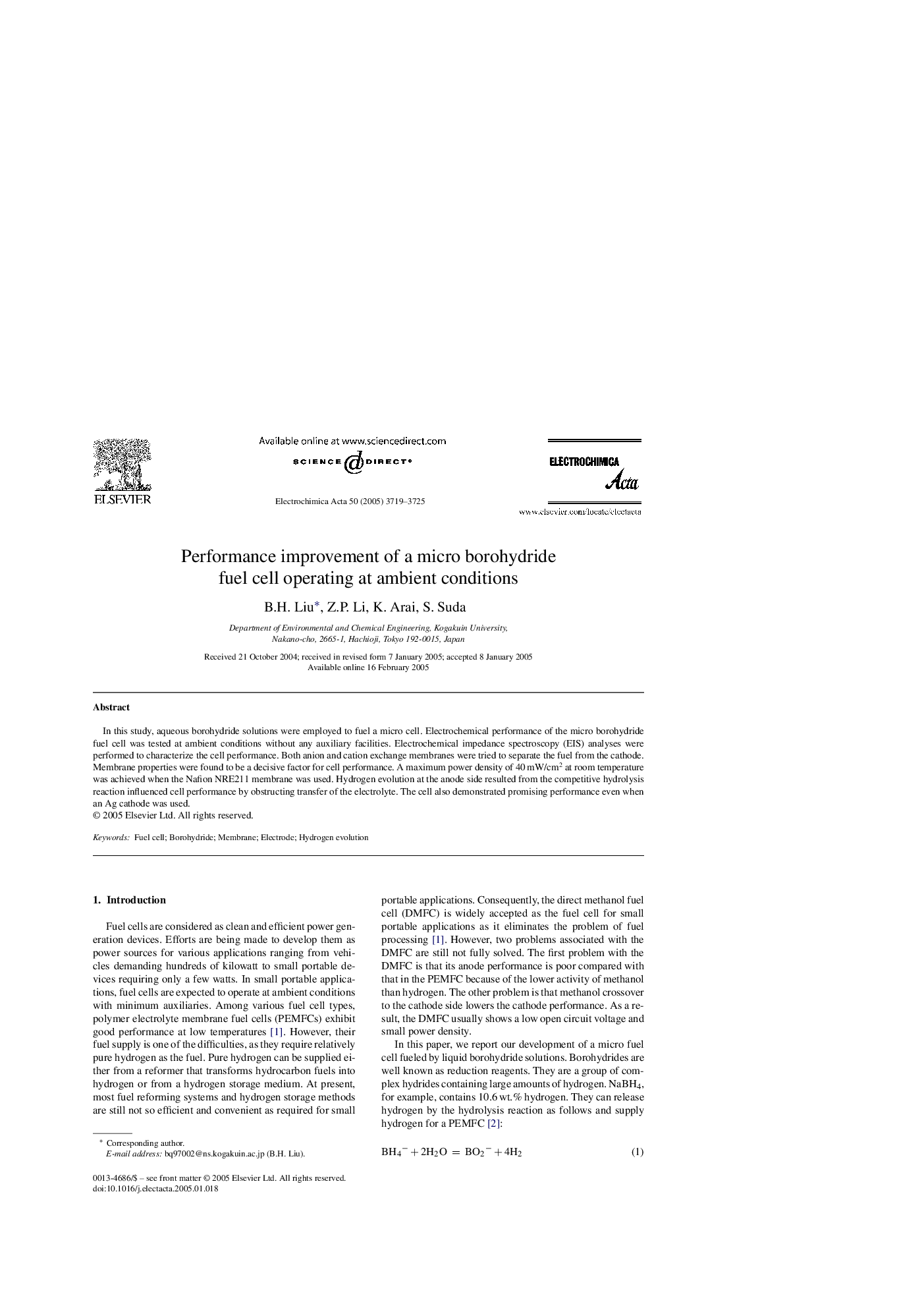| Article ID | Journal | Published Year | Pages | File Type |
|---|---|---|---|---|
| 196966 | Electrochimica Acta | 2005 | 7 Pages |
In this study, aqueous borohydride solutions were employed to fuel a micro cell. Electrochemical performance of the micro borohydride fuel cell was tested at ambient conditions without any auxiliary facilities. Electrochemical impedance spectroscopy (EIS) analyses were performed to characterize the cell performance. Both anion and cation exchange membranes were tried to separate the fuel from the cathode. Membrane properties were found to be a decisive factor for cell performance. A maximum power density of 40 mW/cm2 at room temperature was achieved when the Nafion NRE211 membrane was used. Hydrogen evolution at the anode side resulted from the competitive hydrolysis reaction influenced cell performance by obstructing transfer of the electrolyte. The cell also demonstrated promising performance even when an Ag cathode was used.
